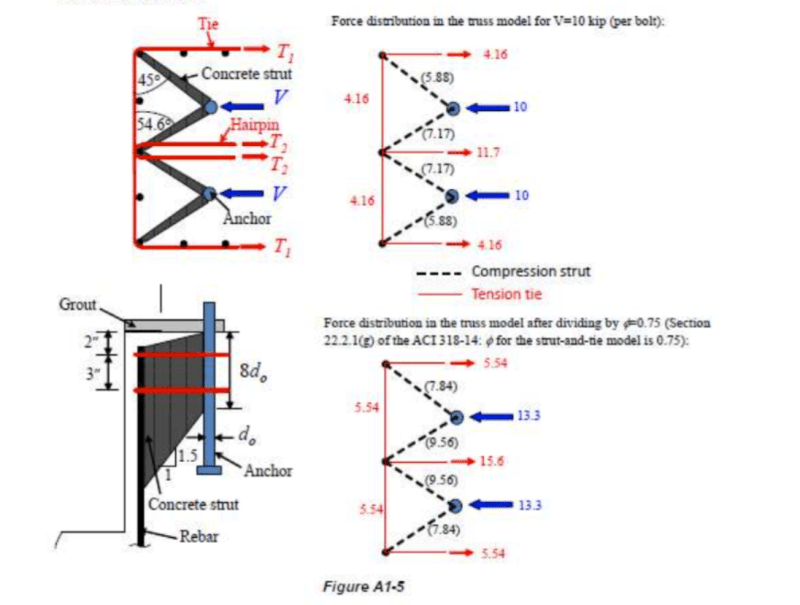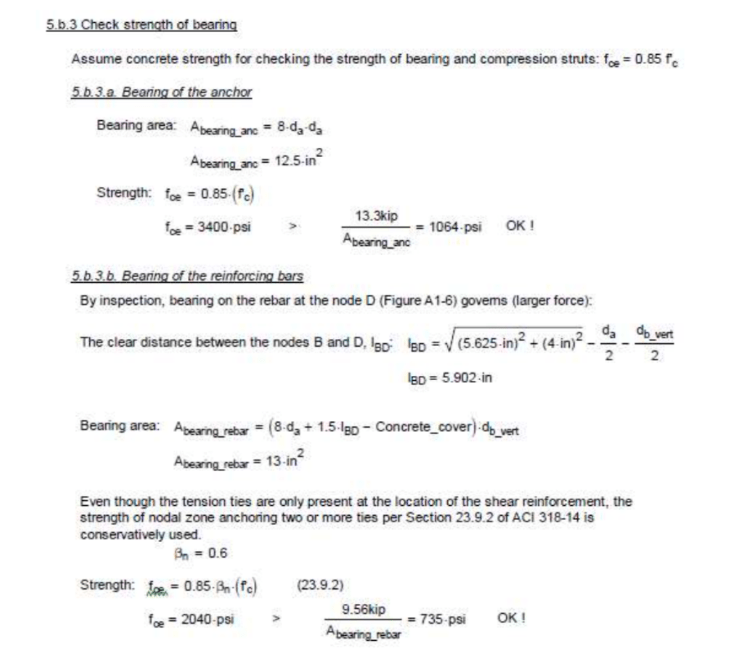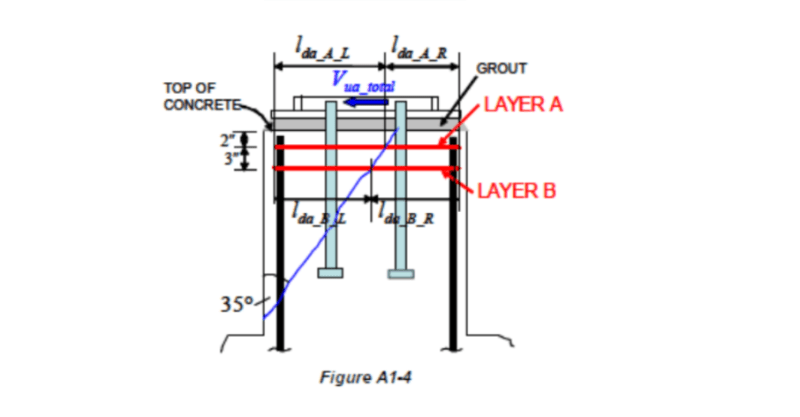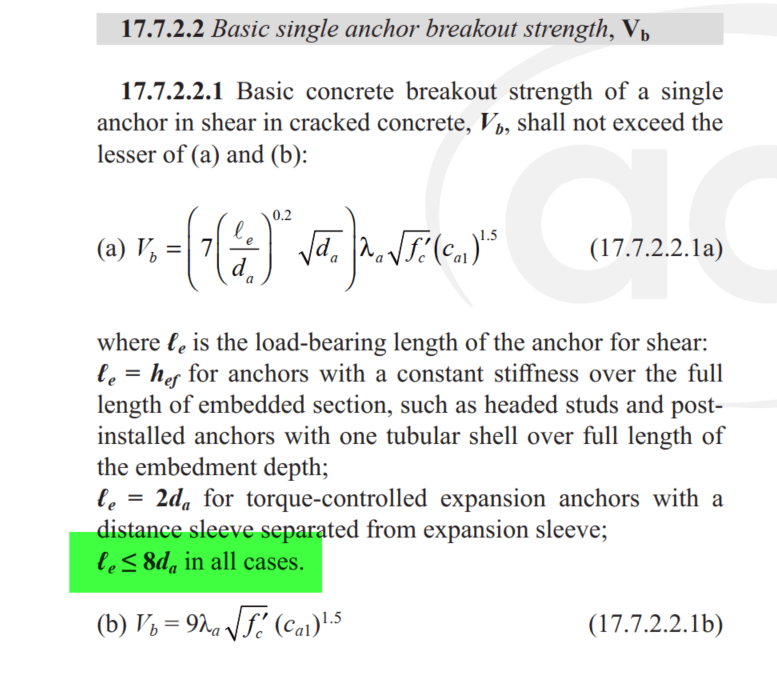BAGW
Structural
- Jul 15, 2015
- 392
Hi,
I am using anchor reinforcement for shear resistance around anchors per chapter 17 of ACI. I am developing the reinforcement on either side of the breakout cone per ACI.
Is there any minimum anchor depth requirement I need to maintain (I typically provide 12" to 18" when no tension and only shear) ? I think its not mentioned in ACI as the break out cone starts at the top of the concrete (where we have top bars to resist the shear) and hence embed length does not really matter.
Any thoughts on this.
I am using anchor reinforcement for shear resistance around anchors per chapter 17 of ACI. I am developing the reinforcement on either side of the breakout cone per ACI.
Is there any minimum anchor depth requirement I need to maintain (I typically provide 12" to 18" when no tension and only shear) ? I think its not mentioned in ACI as the break out cone starts at the top of the concrete (where we have top bars to resist the shear) and hence embed length does not really matter.
Any thoughts on this.




